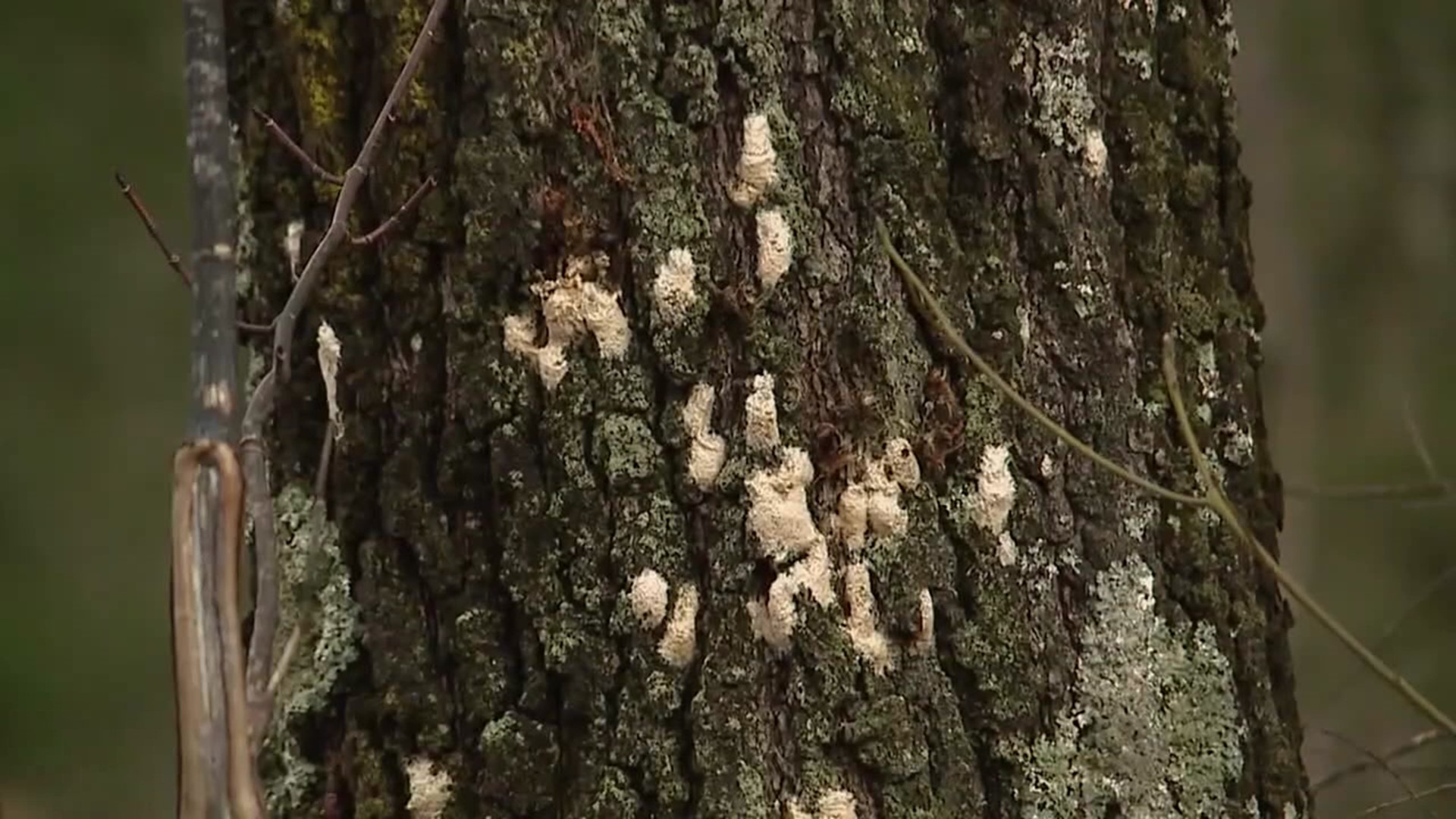CLINTON COUNTY, Pa. — If you're driving on Interstate 80 in Clinton County, you may notice something odd. Many of the trees don't have leaves.
The cause is Lymantria dispar, more commonly known as the Spongy Moth. The bug eats everything in its path during its caterpillar phase. It was previously known as the Gypsy Moth.
"Spongy moth goes through these outbreaks where it builds up, especially in the front side of an outbreak. The first couple of years are really bad because the egg masses are really big," said Donald Eggen, a Pennsylvania DCNR forest health manager.
In 2021, the bug was responsible for 321,000 acres of defoliation across the state. Spongy Moth outbreaks in central Pennsylvania last anywhere from one to three years.
"The outbreak expanded and built up in a lot of other areas of the state, so we are anticipating the damage will be larger than last year," added Eggen.
It only takes about 250 egg masses per acre to get complete defoliation. Egg masses the size of a quarter contain about 250 to 500 eggs each.
"We were dealing with populations this year that had tens of thousands of egg masses per acre," he said.
The Pennsylvania DCNR sprayed insecticide across 210,000 acres of state-owned forest this year. However, insecticide isn't the only thing that can stop the bug.
"Generally, what happens in the areas that it has been bad in 2021 and 2022, the virus and fungus disease kick up and help control population," stated Eggen.
Folks who own or live on private land must buy their own insecticide or hire a company to do the spraying in the fall or winter months. You can find more information about private land spraying here.
Check the areas being sprayed on the DCNR website here.
See news happening? Text our Newstip Hotline.

